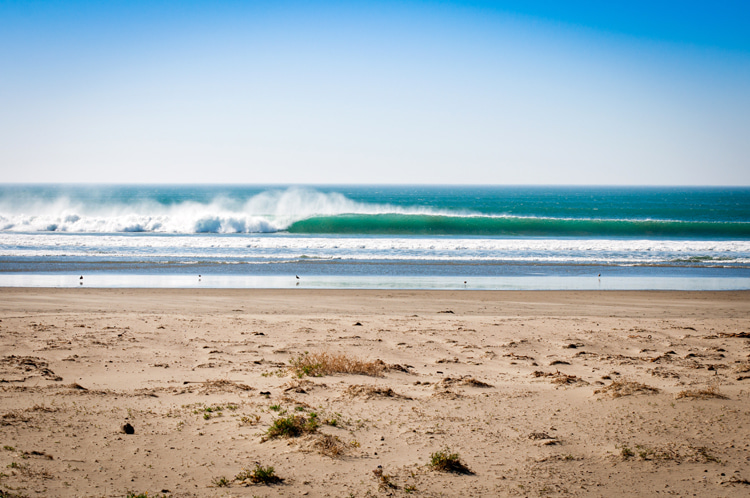The beach is the final frontier between land and the ocean. It's the bridge between human territory and a water body responsible for producing over half of the planet's oxygen.
The impact of human activity on the oceans of the world - which cover more than 70 percent of the Earth - has dramatically and substantially increased since the early 1900s.
The globalization of commerce, the advent of plastics, and the significant explosion of mass-marketed electronics and digital devices put unprecedented pressure on saltwater bodies.
In less than a century, the negative impact of human activities on the environment and the oceans, in particular, has not ceased to increase at a dramatic pace.
For the first time in the history of civilization, we started to witness plastic bottles, bags, toys, and other PVC-based consumer products washing ashore.
Plastic accumulation in the world's five oceans led to the creation of floating islands of trash like the Great Pacific Garbage Patch and swells of plastic debris.
There's footage of waves of plastics breaking in what once were paradise beaches and pictures of surfers getting barreled in plastic-infested waves.
While the world is trying to figure out ways to reduce the use of single-use plastics and find sustainable replacements for the popular and malleable synthetic polymer, the results of this dependency seem to become more and more severe year after year.
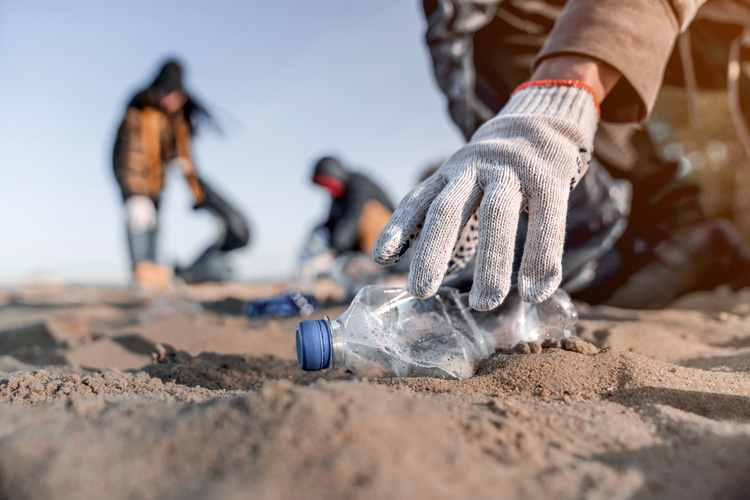
Why Cleaning Up Beaches Matter
Although there are no exact and accurate figures due to the so-called coastline paradox, the world has around 221,200 miles (356,000 kilometers) of coastline.
Roughly 40 percent of the planet's population lives within 62 miles (100 kilometers) of the coast.
So, it's clear how and why everything ends up on the beach and in the ocean.
Is there something we could do to keep the sands of the world clean and free from harmful microplastics, cigarette butts, deteriorating soft drink bottles, needles, and ghost nets?
There is.
The following essay details a possible and feasible action plan to keep our beaches clean 365 days per year.
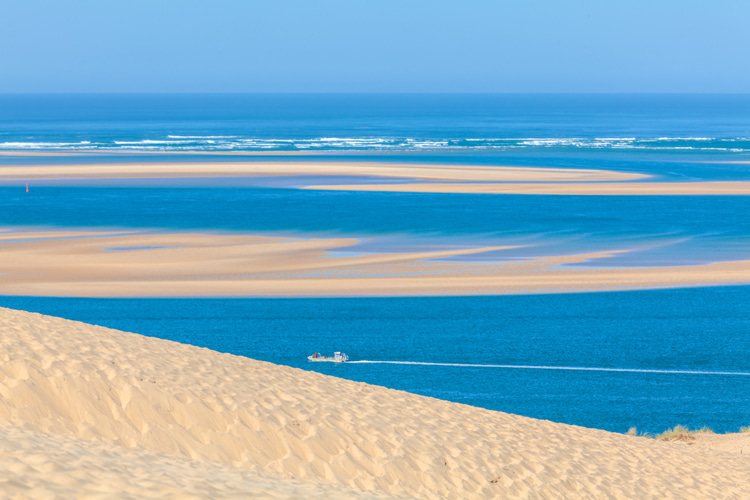
What's at Stake
There's hardly anyone who'd say they enjoy watching the sunset, sitting on the sand, or standing on the boardwalk in front of a beach covered in trash.
Whether you live in a coastal community or are simply on vacation visiting a beautiful and lively surf town as a tourist, the image of a dirty beach is always sad, depressing, and heartbreaking.
Many of us spent our childhood summer days on the beach.
We built sandcastles, ran across the warm sand, threw wet sand to friends, found starfish and small crabs, and even fell in love by the sea in the last days of summer.
Beaches are part of many people's memories.
Actually, some of the best days of our lives were spent in that summer house, beach hut, or tent, having light sandwiches and drinking orange juices for lunch.
Beach life shapes our personality - no doubt about it.
But there's a lot at stake when we talk about the importance of beaches to societies around the world.
Tourism & Economy
The beach is one of the most important tourism resources for more than 100 countries.
It is responsible for attracting, in many cases, more tourists every year than the country's overall population.
When it comes to beach tourism, hotels and accommodation, restaurants, and shops are only the tip of the iceberg.
There are also several other economic activities indirectly impacted by tourists who seek warm weather and pristine beaches.
Tourism generates taxes that help fund national health services, education, and infrastructure.
According to the World Travel & Tourism Council (WTTC), in 2019, 44 nations relied on the tourism and travel industry for more than 15 percent of their total share of employment.
In the Caribbean, tourism contributed 14.1 percent to the GDP of the region's island nations.
The contribution reached 9.9 percent in the Asia Pacific, followed by Europe with 9.5 percent, the Middle East with 8.9 percent, and America with 8.8 percent.
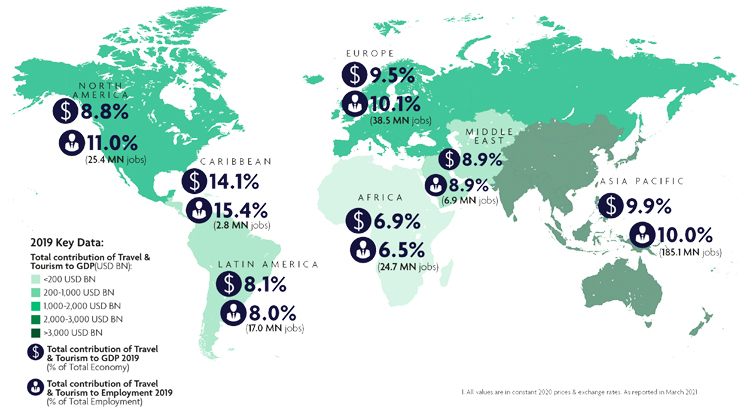
Beach Safety
World beaches have been accumulating millions of micro, small, and medium pieces of trash, plastics, and chemical substances.
Despite valuable efforts to keep the shorelines clean in many regions, the number of extremely small unwanted substances buried deeper in the sand has increased exponentially.
Most of these human-made microparticles cannot be cleaned up by even the most advanced tractor-towed beach cleaners.
They are also nearly impossible to collect manually by volunteers, meaning that they will remain deep under the surface sands forever.
This growing problem is visible even on the most popular and sought-after Blue Flag beaches.
Microplastics - and toxic cigarette butts - at worldwide beaches are a plague without an end in sight.
They are a threat to children, who can easily put them in their mouth, to pets and other marine animals, and to everyone who enjoys spending time on the sand.
Beach safety doesn't only involve lifesaving and accessibility - the quality and health of the sand are critical, too.
Ocean Protection
If we can't clean the oceans, we could at least prevent the trash from getting into the waters, especially near the coastline.
Keeping a beach clean also results in fewer unwanted items and debris entering the water and washing offshore.
Regular maintenance of the world's shorelines reduces the percentage of waste that is dumped into the oceans, enters the marine food chain, and eventually goes back into our bodies whenever we eat fish.
In a way, the beach could be seen as the first line of defense or buffer between the ever-growing industrialization of human life and marine resources.
So, as we've seen above, the tourism economy, beach safety, and ocean protection are three valid reasons for embracing the challenge of keeping our beautiful stretches of sand clean all year round.
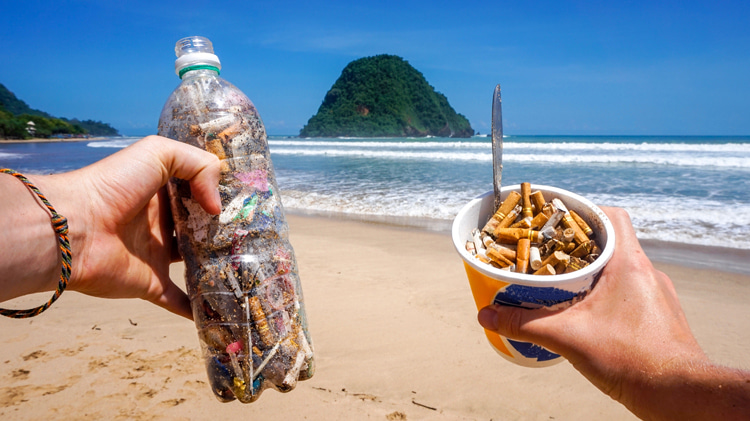
The Organizations Involved
The project for keeping beaches clean 365 days per year is not an impossible mission.
Actually, it is simpler and easier than it sounds.
There's a broad list of entities that could take part in a national strategy to conduct regular beach cleanups across the country.
So, who should be involved in this critical and urgent task? The more organizations, the better.
At a local level, there will always be city, town, and village councils. If there's a will to do it, they are the ones who should be leading the task force.
Then, whenever possible, a cooperative collaboration with state-level authorities (for instance, an Environment Ministery or Ministry of Maritime Affairs) and port authorities could mean a better and larger number of resources and equipment.
The local and national tourism boards may also join the challenge.
How? By providing statistics and relevant data on the most visited coastline regions in order to set the top beach cleaning priorities.
The military could play a key role in a national beach cleanup program. It often has the human resources - and equipment - needed to support nationwide operations at a local or regional scale.
Non-governmental organizations (NGOs), groups of citizens, local communities, surfers, and surf-related NGOs should also do their part.
Last but not least, the private sector could and should get involved by financially supporting regular beach cleanups as part of their social responsibility and philanthropy duties.
The Resources
When we think about the apparently utopic mission of keeping the world's beaches clean all year round, we tend to immediately think about the costs involved in equipment, machinery, and hardware.
However, if there are people to do it, coastal communities can easily manage beaches under their supervision.
It's hard to find municipalities with hundreds of miles of coastline.
So, what type of paraphernalia do we need to clean up a beach fast and efficiently? Not much.
The most effective method for collecting trash from the sand is the beach cleaning machine.
The beach cleaning machine is a beach rake that can hydraulically lift up all types of debris, including plastic, glass, cans, syringes, dead fish, shells, wood, stone, seaweed, cigarette butts, and other small objects.
The good news is that these beach rakes are add-ons that can be attached to standard tractors.
The most advanced models are able to clean, for example, up to nine acres of sand per hour with a seven-foot wide cleaning path.
Their operating speed ranges from one to 15 miles per hour (1.6-24 kilometers per hour), and the cleaning depth goes up to six inches (15 centimeters).
Several offset rows of tines work in the sand at all times by pulling debris to the surface of the sand for immediate removal.
Each cleaning machine only requires one operator and residual wet or dry sand always falls back onto the beach.
There are even additional mechanical options to go down into the sand, revolve, and pull it up in order to increase the amount of sand exposed to the sun and kill bacteria like E. coli.
But there are also portable beach rakes that can easily be deployed on a beach. These compact, highly maneuverable, walk-behind sand sifters can elevate the sand, filter debris, and deposit it into the collector.
Once all trash is collected, it is dumped into large containers and sent to recycling centers.
People who are not operating beach cleaning machines can use hand trash pickers or even a homemade sand sifter/strainer to collect debris.
A pair of gloves and trash bags will do the rest.
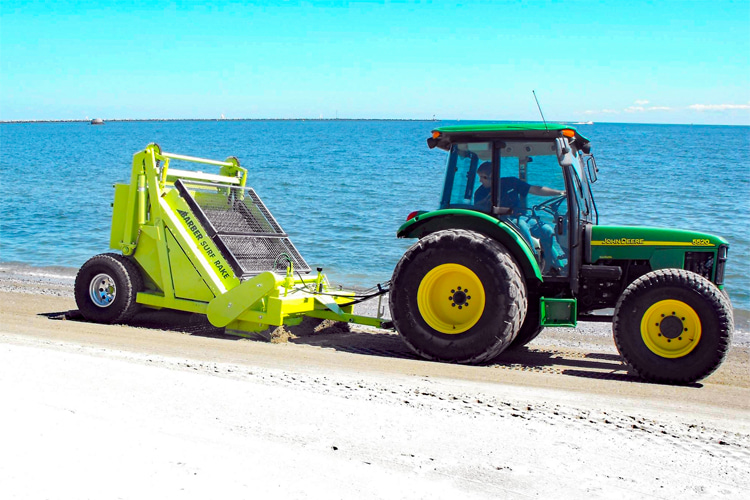
The Year-Round Beach Cleanup Master Plan
As we've seen above, countries don't need much to keep their beaches clean 365 days per year.
It is not human resource-intensive, definitely not expensive, and the tangible financial and social gains and benefits are immense.
But how do you set up a functional, regular, and cost-effective beach cleanup program on the ground?
How do you put in place an efficient and time-effective beach cleanup strategy? How do you schedule interventions all year round?
The first thing we need to address is involvement. Which organizations and institutions agreed to join the challenge?
Once they've been identified, it's time to define roles and responsibilities and assign tasks according to a yearly schedule program.
In other words, if a coastal town manages - or co-manages - 20 beaches spread along 15 miles (24 kilometers) of coastline, it should allocate all resources available equally along the sands under its supervision.
In order to do so, local authorities must design an intervention calendar that adapts to the high and low tourism season and also to the workweek and weekend days.
For instance, it's not reasonable to plan a full beach cleanup at 10 am, at the peak of the warm season, with thousands of beachgoers on the sands.
The same applies to spring and autumn - it's not a wise move to put cleaning machines on the sands during weekends when a few hundred families may be walking or relaxing on the beach.
That's why planning interventions throughout the year and allocating human and technical resources is critical to a successful operation.
Also, local coastal communities should seek constructive and bi-directional cooperation with coastal and inland neighbors.
If a small town owns a beach rake and only manages a couple of miles of beaches, why shouldn't it help its larger neighboring communities?
If there's a large inland metropolitan area with hundreds of tractors available, why shouldn't it lend a few tractors to its neighbor?
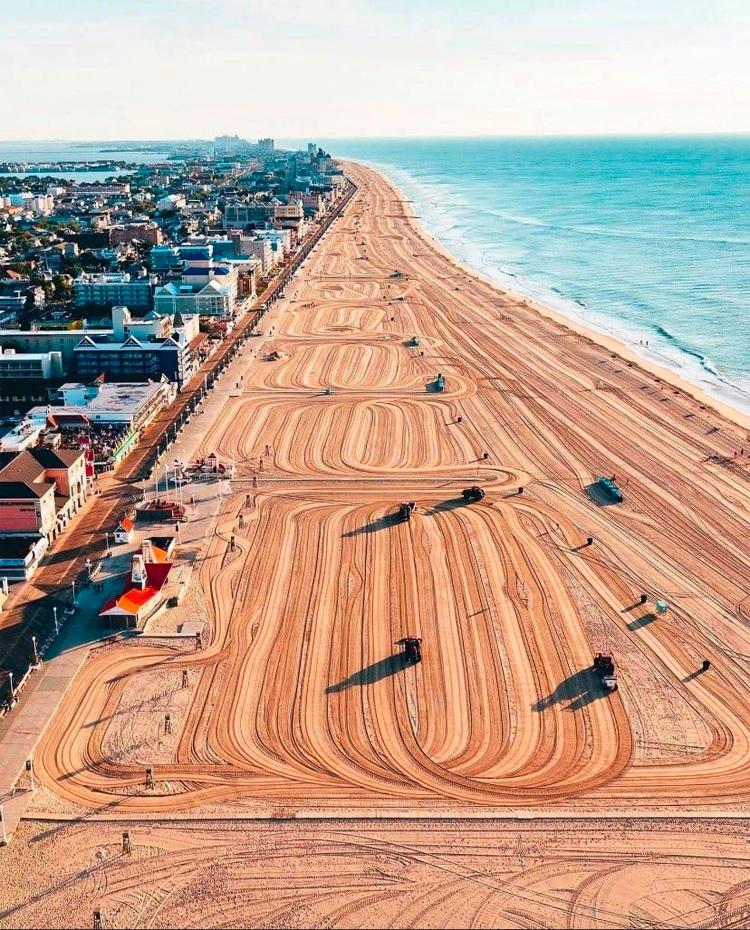
A Practical Example
Last but not least, a national example.
Portugal is one of Europe's most visited destinations.
The Western European country with 300 days of sun per year has a population of around ten million people.
In 2019, Portugal welcomed 24.6 million tourists, which means 2.46 times its resident population.
Most tourists choose Portugal for its beaches, weather, history, food, and well-known hospitality.
Mainland Portugal has 53 coastal municipalities/counties.
The number of beaches under the supervision of each one of these communities varies from one (Pombal) to 53 (Lagoa).
Of all 53 coastal municipalities with more or less long stretches of sand, 24 councils manage only ten or fewer beaches.
In conclusion, setting up a viable and implementable plan to keep Portuguese beaches clean all year round is perfectly doable.
The task obviously involves local and regional coordination, as well as national, government-level support, if possible.
But setting up a weekly or biweekly action plan - 26 or 52 cleaning operations per year - is something that could change a country's tourism paradigm and set a new world standard in the tourism industry.
And for politicians, decision-makers, and tourism operators who appreciate results and return on investment, the goal to treat their country's coastline as a national treasure is something worth putting in place and being remembered for.
Words by Luís MP | Founder of SurferToday.com
